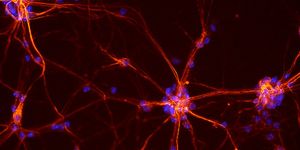The streams are speaking: will we listen?
Using streams to monitor the health of an ecosystem has been in the scientist’s toolbox for a while now. That’s because a lot of the pollutants that we humans emit into the environment, from fertilizers to fossil fuel extracts, end up in freshwater ecosystems. Looking at river and stream health is critical to understanding what triggers cyanobacteria blooms and dead zones and how erosion and dredging affect whole food chains and the water cycle. All that stuff matters to us and our food production and security. But have we been employing the best tactics to determine stream health? New research from Michigan State University says there may be a better way.
The research, published in Ecology Letters and conducted over 12 years, was headed by scientist Ben Abbott in an area of western France that has been used for agriculture for almost a thousand years. This particular region has had a lot of nitrogen and phosphorus pumped into it for a long time in the form of fertilizers – and the watersheds are evidence of that.
After testing 56 headwater catchments, the research team found that the stream chemistry was very diverse among the streams in the area, probably because of differences in temperature and water flow. Yet, they also found that there was spatial stability in the headwater stream networks. The authors write in the study: “temporal variability in dissolved carbon, nutrients and major ions was preserved moving downstream and spatial patterns of water chemistry were stable on annual to decadal timescales, partly because of synchronous variation in solute concentrations.”
That’s a lot of science-speak, but Abbott puts it into plainer words: "[It] was unexpected. Somewhat surprisingly, we found that a single sampling of headwaters any time of year provides a lot of information about where nutrients are coming from and where to target restoration efforts."
Headwaters, that’s the key. "Our methods show that we can learn much from a relatively small number of samples if they are collected more strategically than current watershed management practices dictate,” said Jay Zarnetske, co-author of the study.
It’s about efficiency, the scientists say. "Basically, instead of standing in a large stream far from the headwaters and observing what flows past us through time," Zarnetske said, "we illustrate that it can be much more informative to periodically travel around the region and grab samples from the smallest to the largest streams in the watershed."
This change in methods could prove crucial to scientists as our population continues to grow and water resources become ever more strained.
The scientists plan to continue their research around the world, using the methods they’ve learned in this study. They hope that their technique will help better inform land-use managers, farmers, and other scientists on which watersheds can be sustainably used for agriculture and other practices.
Sources: Ecology Letters, Science Daily










